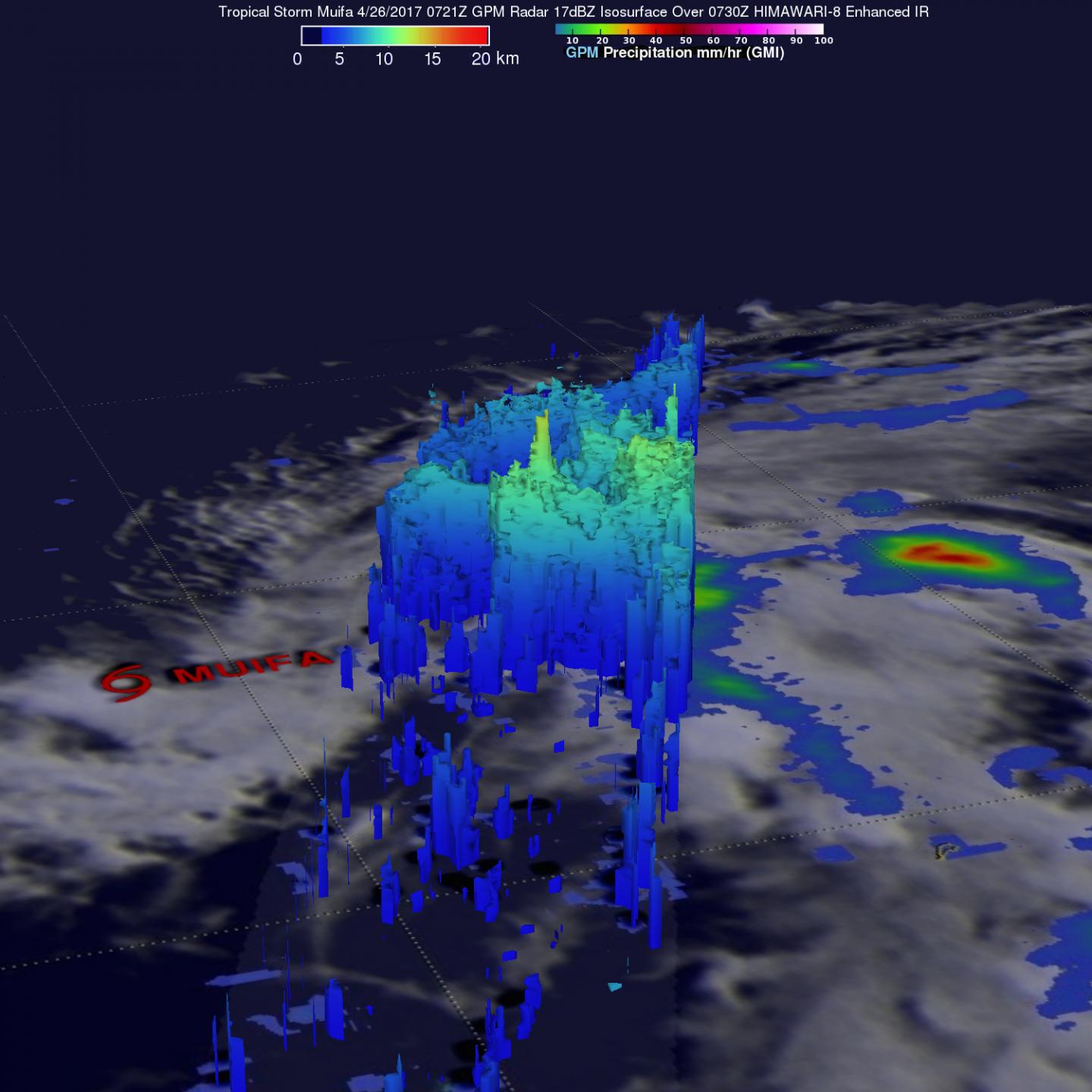
Credit: Credits: NASA/JAXA, Hal Pierce
Vertical wind shear can weaken a tropical cyclone and that's what's happening to the now weaker Tropical Depression Muifa in the Northwestern Pacific Ocean. NASA gathered rainfall information about the storm as wind shear continued to weaken it.
The Global Precipitation Measurement mission or GPM core observatory satellite again passed over Tropical Storm Muifa in the western Pacific Ocean on April 26, 2017 at 0721 UTC (3:21 a.m. EDT). GPM data revealed that there was very little precipitation around Muifa's low level center of circulation. A red tropical storm symbol shows the approximate location of tropical storm Muifa's center. Rain was measured by GPM's Dual-Frequency Precipitation Radar (DPR) falling at a rate of over 193 mm (7.6 inches) per hour in storms located well to the east of the tropical cyclone's center.
GPM's Radar (DPR Ku Band) data were used to show the 3-D structure of precipitation in a cross section through the eastern side of the tropical storm. Storm tops in the DPR swath were shown to reach heights above 16 km (9.9 miles). Maximum sustained wind speeds in Muifa were estimated to be about 40 knots (46 mph) at the time of this GPM pass. The image was created at NASA's Goddard Space Flight Center in Greenbelt, Maryland. GPM is a joint mission between NASA and the Japanese space agency JAXA.
On April 27 at 1500 UTC (11 a.m. EDT) Muifa's maximum sustained winds were near 30 knots (34.5 mph/55.5 kph). Muifa has weakened to a depression and was centered near 17.3 degrees north latitude and 135.1 degrees east longitude, about 489 nautical miles north-northwest of Yap. Muifa has tracked northward at 11 knots (12.6 mph/20.3 kph).
The Joint Typhoon Warning Center (JTWC) noted "the lack of convection and the absence of an organized low level circulation indicates that the system is continuing to weaken." JTWC predicts Muifa will continue to weaken and dissipate in a day or two.
###
Media Contact
Rob Gutro
[email protected]
@NASAGoddard
http://www.nasa.gov/goddard
############
Story Source: Materials provided by Scienmag





